Visit Hundred-Year-Old Traditional Craft Villages In Quang Binh
Quang Binh, Vietnam has become an ideal destination for visitors to discover many breathtaking natural attractions, participate in entertaining activities, and enjoy famous local dishes. A variety of untouched natural landscapes are the unique feature of this area.
Quang Binh is located on the northern central coast of Vietnam, adjacent to Quang Tri to the south, Ha Tinh to the north, and Bien Dong to the east. Although the entire area is only more than 8000 square kilometers, Quang Binh, Vietnam is considered the “Kingdom of Caves” with 404 different caves, stunning beaches, and wild mountains.
The cultural life of the Quang Binh people is simple but diversified. Life is associated with rice fields, rivers, and the sea. Quang Binh still retains long-standing traditional craft villages which is imbrued with local culture such as Chieu Coi Village in Le Thuy, a Non-traditional hat village, Mai Hong forging and casting village, Tho Don bamboo and rattan village, Tan An rice paper village. Quang Binh’s festivals also contain the beauty of spiritual culture and historical traditions of the sacred land.
Canh Duong fishing village
Canh Duong fishing village - a coastal land located next to the romantic Roon River - is famous for its traditional craft villages of fishing, fish sauce making, and dried seafood.
On the 15th day of the first lunar month, villagers perform a whale worshiping ritual which has been preserved for a very long time. In the early morning, fishermen and boat owners gather at the Whale Worshiping Shrine to offer incense and other offerings to the Whale Genie.
Activities include a procession to the temple, an offering of incense, an oration, chanting, and a recreation of a boat sailing on the land, an important ritual showing the locals’ gratitude for Mr and Mrs Whale. During the whale worshiping festival in Canh Duong village, the locals pray for good crops, happiness, peace, and favorable weather.
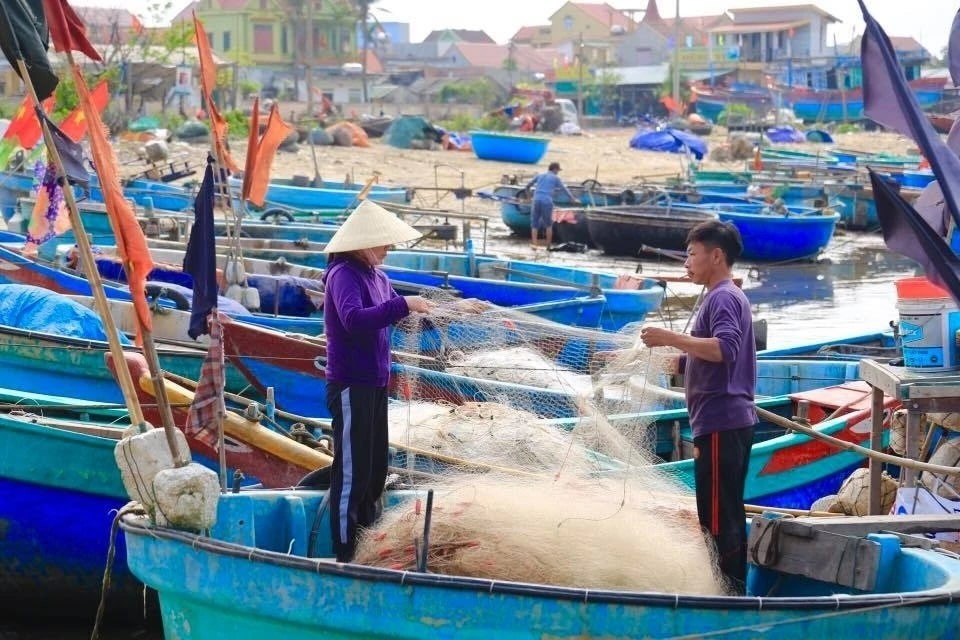 |
| Canh Duong fishing village - a coastal land located next to the romantic Roon River - is famous for its traditional craft villages of fishing, fish sauce making, and dried seafood. Photo: Zingnews |
The inland sailing ritual takes place only in Canh Duong village. Inland sailing means raising the anchor, paddling, and moving the boat inland to simulate the life of the fishermen. The inland sailing ritual originated in the legends of whales who chose Canh Duong as a final resting place.
The whale worshiping ritual, which reflects the cultural life of Canh Duong fishing village, also illustrates a popular Vietnamese saying that “When drinking water remember its source”. Worshiping an animal generation after generation expresses a desire to do good deeds to enjoy a peaceful life.
An Xa Village
Talking about the craft villages of Quang Binh, it is impossible not to mention An Xa village, famous for its traditional sedge mat making. The mat-making profession here is more than 600 years old and has been preserved and developed by the villagers for many generations. Visiting An Xa village, visitors will admire the beauty of the artisans' labor at each stage from choosing the sedge and dyeing it to weaving the finished mat.
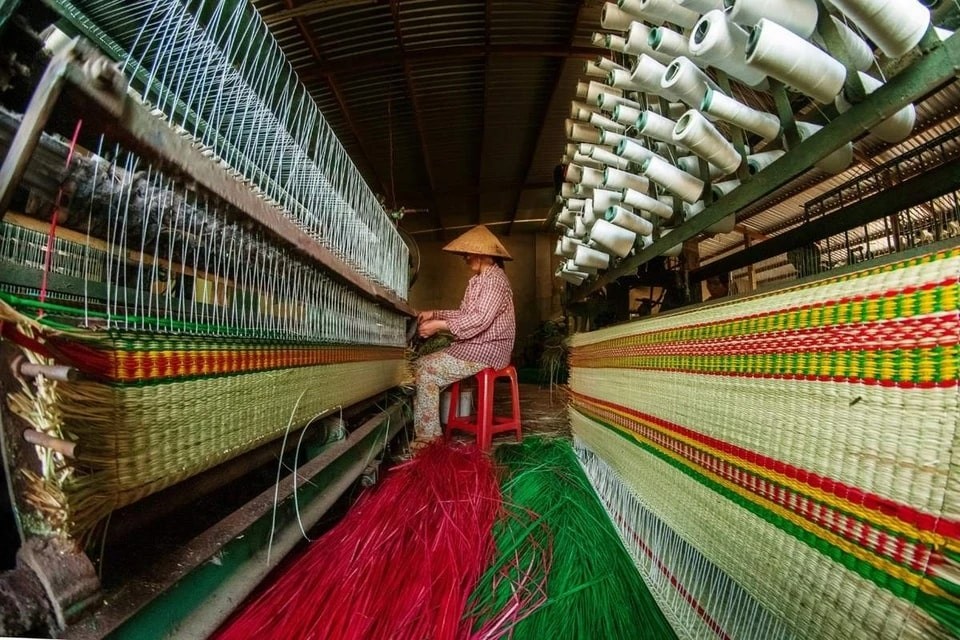 |
| The mat-making profession here is more than 600 years old and has been preserved and developed by the villagers for many generations. Photo: Zingnews |
The weaving loom is quite simple, fabricated from 2 big parallel wood sticks with jute fibers tightened as warps. It is necessary to have two craftsmen for the weaving process. One person sits on the loom to control the heddle and the other uses a long thin wood stick instead of a shuttle to insert the weft.
The weaving process of sedge mats is the same as other tabby or basic weaving. Firstly, they insert sedge wefts with repeated “over one – under one” motions into warps. Next, they push them down with a heddle and then repeat the steps. Finally, they wash the mats and decorate them with pattern prints or hand paintings.
Ba Don Conical Hat Craft Village
The craft of making conical hats has been a source of livelihood for the people of Ba Don for almost 200 years. Despite the challenges of history, it has become a traditional profession that has been passed down from generation to generation.
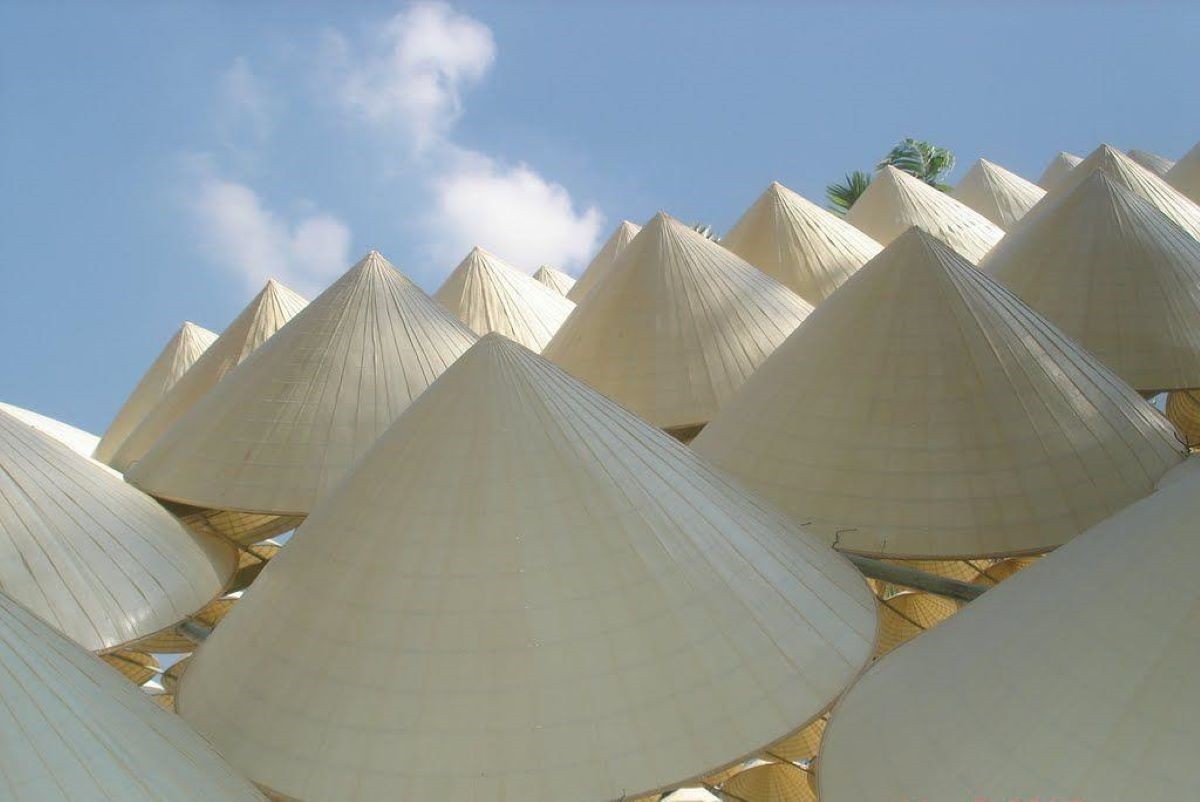 |
| The craft of making conical hats has been a source of livelihood for the people of Ba Don for almost 200 years. Photo: Baodantoc |
There are two types of Ba Don conical hats: green conical hats and coconut conical hats. Green conical hats are based on the pattern of Hue's poem conical hats. To make this type of conical hat, the hat maker will arrange three layers of leaves on 16 brims and then attach the hat. The second type is a coconut leaf cone. The process of making this product is similar, but the difference is that the worker will arrange a layer of cone leaves inside and a layer of coconut leaves on the outside.
The Ba Don conical hat craft villages are not just places that produce long-standing, characteristic traditional handicraft products. They also serve as a hub for preserving the quintessence of folk art, production experience, and customs and practices of the community. Due to this unique feature, the craft village has become an attractive destination for domestic and international tourists in recent years.
Tan An Rice Paper Village
260 local households in Tan An Village, Quang Trach District's Quang Thanh Commune produce rice paper for a living, consuming a total of 300 tonnes of rice each year. These days, as temperatures in Quang Binh hit 40 degrees Celsius, Tan An is at its most productive.
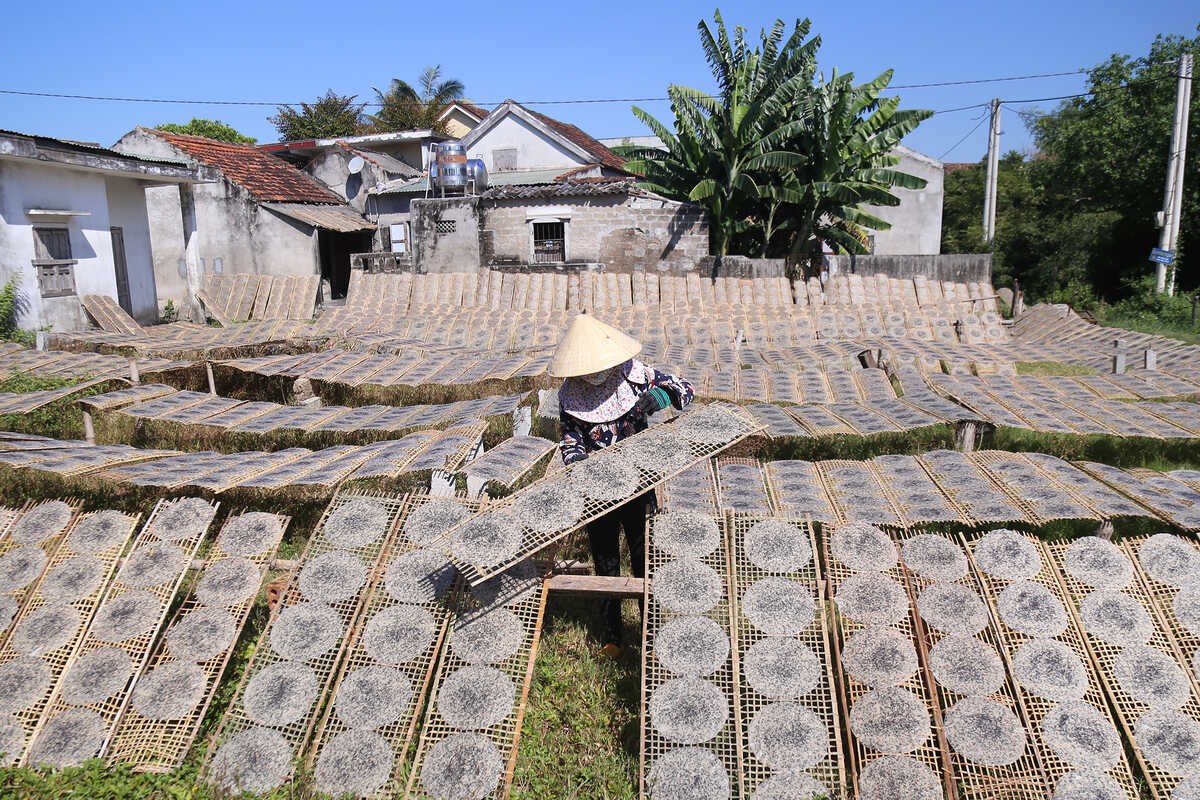 |
| 260 local households in Tan An Village, Quang Trach District's Quang Thanh Commune produce rice paper for a living. Photo: Vcci |
This job only lasts from February to October each year, grinding to a halt in the rainy season amid the absence of sunshine.
Rice paper, including black sesame, yellow sesame, and for making spring rolls, is dried in the sun. Black sesame rice paper is left to dry for only about three hours, it bends and crumbles, requiring villagers to keep a close eye.
By the afternoon, dry rice paper is gathered and packed. Mechanization helps this facility produce 35 tonnes of rice paper a year. The final stage involves counting the number of rice papers in each pack before distribution to localities like Hanoi, Hue, and Da Nang.
 | Enjoy A Peaceful Summer Vacation In Cuc Phuong National Park Cuc Phuong National Park, with its lush greenery, diverse flora and fauna, and spectacular scenery, is a lovely choice for a peaceful summer getaway from ... |
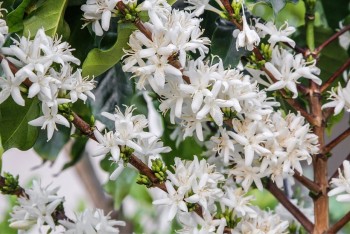 | Captivating White Coffee Flowers Blooming In The Central Highlands The Central Highlands is not famous for its green tea hills, majestic mountains, and villages, the white coffee flowers blooming also create a dreamy and ... |
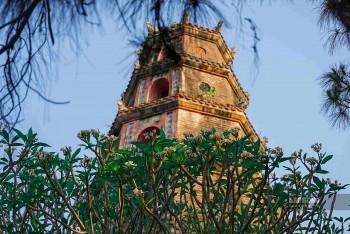 | Brilliant Porcelain Flowers Bloom In The Ancient Capital Of Hue When visiting the sites and relics in the ancient capital of Hue, many tourists are delighted by the elegant beauty of blooming white porcelain flowers, ... |
Recommended
 Travel
Travel
Strategies for Sustainable Growth of Vietnam’s Tourism from International Markets
 Travel
Travel
Vietnam Strengthens Its Presence On The Global Tourism Map
 Multimedia
Multimedia
Phong Nha-Ke Bang National Park Named Top Adventure Travel Site
 Travel
Travel
Phong Nha Named Top Budget-Friendly Travel Destination for Spring 2025: Agoda
Popular article
 Travel
Travel
Four Indian Films Introduced to Lao Cai Audience
 Travel
Travel
Vietnam to Waive Visas for Citizens from 12 Countries until 2028
 Travel
Travel
Ninh Binh Full-day Tour among World’s Top Experiences: TripAdvisor
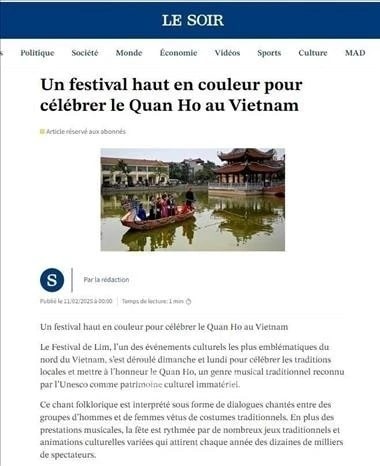 Travel
Travel







